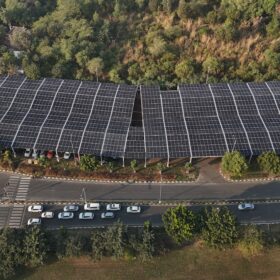India’s proposed and under-construction coal-fired power projects carry a massive stranded asset risk, according to a new report by the Institute for Energy Economics and Financial Analysis (IEEFA).
The report highlights that the financial risk for new coal-fired power projects is under-estimated. It stresses on evaluating the financial viability of these projects based on the right estimation of utilization factors.
Currently, India has 33 GW of coal-fired power plants under construction and another 29 GW of proposed projects under various stages of regulatory approval.
The IEEFA report said coal-fired power plants may look like low-cost projects and worthwhile ventures to potential investors as their levelized cost of energy (LCOE) is being underestimated.
The LCOE of coal-fired power plants is calculated by assuming a constant rather than a declining or variable capacity factor over the plant’s lifetime. In other words, it is assumed the plants will be able to successfully produce the same quantity of electricity every year throughout their lifetime. In fact, this constancy rarely occurs.
Kashish Shah, the author of the report and energy finance analyst at IEEFA, said the LCOE is the required tariff at which the net present value of the investment is zero.
“In other words, LCOE is the minimum required average tariff for a power asset to reach a breakeven return at the end of its life. Anything less than that suggests the asset is unviable.”
For most coal plants in India, the LCOE is calculated by assuming a utilization factor of 85-90% throughout the project life. However, the LCOE turns out to be 64% higher with India’s average capacity utilization factor sitting at ~55% for the last few years.
Shah found that the average utilization rate of India’s coal-fired fleet has collapsed to a financially unsustainable low of 53% in financial year (FY) 2020/21 from a high of 78% a decade ago in FY2011/12.
“The aspiration for further builds of coal capacity stems from the notion that coal is still ‘cheap’,” said Shah. “However, with tariffs now below INR 2/kWh (US$27/MWh), solar power is cheaper than even the variable cost of coal-fired power and is ready to absorb incremental daytime demand.”
“With zero fuel costs, the marginal cost of generation for renewables is practically zero,” said Shah. “On the other hand, with increasing inflation in Indian domestic coal prices and railway transportation costs for coal, the gap between cost competitiveness of renewables versus coal is widening.
“This raises a serious concern about the viability of coal-fired power plants. Debt servicing for underutilized coal-fired power assets becomes extremely difficult and creates a liquidity crunch in the whole value chain. The financial stress then spills over to the power distribution sector as well as affecting India’s financial lending institutions. This further inhibits growth in other important segments of the power industry such as renewables and transmission infrastructure, which are extremely critical for India’s electricity sector transition.”
This content is protected by copyright and may not be reused. If you want to cooperate with us and would like to reuse some of our content, please contact: editors@pv-magazine.com.









3 comments
By submitting this form you agree to pv magazine using your data for the purposes of publishing your comment.
Your personal data will only be disclosed or otherwise transmitted to third parties for the purposes of spam filtering or if this is necessary for technical maintenance of the website. Any other transfer to third parties will not take place unless this is justified on the basis of applicable data protection regulations or if pv magazine is legally obliged to do so.
You may revoke this consent at any time with effect for the future, in which case your personal data will be deleted immediately. Otherwise, your data will be deleted if pv magazine has processed your request or the purpose of data storage is fulfilled.
Further information on data privacy can be found in our Data Protection Policy.